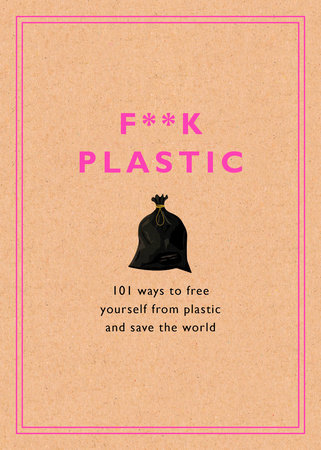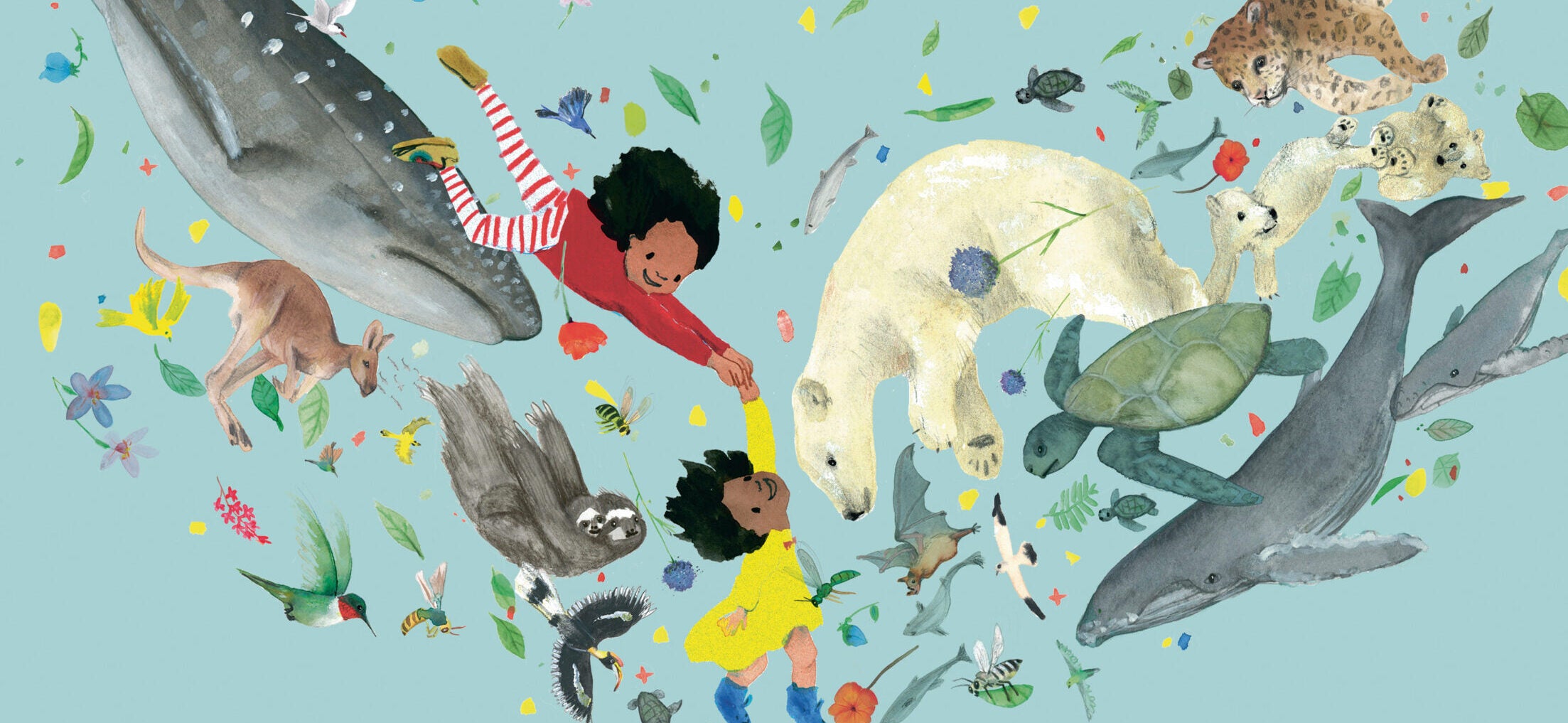FOOD AND DRINK
#1 Buy fresh over frozen
Frozen is obviously great when it comes to prolonging the shelf-life of food that would otherwise go bad quickly and have to be thrown out—waste in itself. But the majority of frozen veggies and fruit come in plastic packaging. However, you can still freeze your food—instead just buy fresh and freeze in reusable containers when you get home. Problem Solved!
#2 Beeswax food wrap
Who wants plastic wrap anyway? We’ve all been there trying to unstick it when it’s rolled in on itself. So here is an alternative for you—beeswax food wrap. It might sound a bit hippie, but not only are these wraps biodegradable, they’re also reusable for up to a year.
#3 Source your own sauce
Who here likes sushi? Who here likes soy sauce? *Me me me.* But if you’re getting it in a take-out place, chances are the soy sauce will come in a teenie little plastic packet. Avoid that packet! Buy your own bottle of soy sauce for your kitchen cupboard/to keep on your desk at work/to put in your bag if you’re a real addict. The bigger bottle you buy, the less packaging you use.
#4 Invest in lunchtime
The nicer your lunchbox, the more likely you’ll want to use it/remember to pick it up after you left it to dry on the rack at work. FACT. So treat yourself to a nice steel tin with your initials engraved on it (also makes a good plastic-free gift for fellow like-minded individuals).
#5 Bring your own bottle
You know this one already—but it’s amazing how many plastic bottles of water and other drinks are still made and bought each year; it’s currently estimated that a million plastic bottles are bought around the world every minute.8 It’s not that plastic bottles aren’t recyclable—the majority are—but with staggering numbers like that, recycling efforts just can’t keep up. The answer is simple: buy yourself a nice, snazzy reusable bottle, keep it in your bag at all times, and fill it up at water fountains on the go.
#6 Opt for the ice cream cone
Everyone knows one. That person who instead of getting their ice cream in a cone asks for the scoops to go in the little tub with the little plastic spoon. We know, we know, some people don’t like the wafer. (If you’re one of them then you’re a little weird, but we’re not here to judge.) But even if you DON’T like the cone and you’ve somehow ended up surrounded by other people who won’t finish it off for you either, as much as food waste is a plague in itself, we know which container is biodegradable. (Ice cream for president.)
#7 Be choosy about cheese
For a lot of us, cheese can be a big deal. But how to escape the fact it often comes wrapped in plastic? Here are our top tips: First, see if you have a local cheesemaker nearby you can try—the likelihood will be you’ll not only be avoiding plastic packaging by buying from them, you could also be reducing the mileage between you and the source of the product (and bonus points for supporting local businesses). Second, if you don’t have a local cheesemaker/you don’t love cheese that much to warrant the price, take a container to the cheese counter in the supermarket and ask them to pop your chosen cheese in it. Third, some cheeses do actually come in plastic-free packaging: wheels of cheese are a good example (minus any plastic stickers), and some brands go for cardboard boxes (just beware of plastic wrapping inside them).
#8 You deserve your own goblet
Take-out coffee cups are for the average (cup o’) Joe—you want one that shows your personality and doesn’t give away that you support huge conglomerates. PLUS a lot of coffee shops will actually give you money off your hot drink if you bring your own reusable cup.
P.S. Some coffee shops (and countries) are already wise to the plastic pandemic and are using biodegradable cups made out of recycled materials. But it’s still obviously better to avoid one-off cups wherever you can.
P.P.S. If you do find yourself in desperate need of a hot beverage and you’ve accidentally left your reusable cup on the draining board, forgo the plastic lid and walk more carefully. Every little bit helps.
#9 Shop at the bakery/greengrocer/fishmonger/butcher
Chefs love telling us to do this but is it really practical? It might not be as convenient as getting all your food from one place, but on the major plus side it can often be cheaper and the food can be better, AND you get to feel warm inside for supporting small businesses. Obviously these shops still do use plastic—so make sure to take along bags and containers and ask the person serving you to refrain from using plastic packaging. Alternatively, you can ask the counters in supermarkets if they’d be happy to do that for you too.
#10 Pack a bag
Lots of countries already tax plastic bags, and boy has it made a difference to how many are produced each year. But we can all cut back more. Plastic bags are still available, and it’s all too easy to pop to the shops after work for a couple of necessities and find yourself empty-handed. The solution is those very sexy fold-up shopping bags that come in a pouch—they fold up small so you can keep them in your handbag/rucksack/shoulder bag/donkey saddle and whip them out whenever you need them. Lots of department stores sell them, but you can also track them down ever-so-easily online by searching “fold-up shopping bag.”
#11 Shop at zero-waste supermarkets
Zero-waste supermarkets are stores where you can collect your dried goods in your own containers, thereby forgoing the plastic packaging (or any other packaging, for that matter) that rice, pasta, and the like are usually to be found in. Not everyone has a zero-waste grocery store near them, but more and more are popping up so keep your eyes peeled!
#12 Look for plastic-free aisles
Coming to a supermarket near you! Some supermarkets around the world are planning an aisle of their own products that will be entirely plastic-free. EkoPlaza in Amsterdam was the first in the world to get one up and running, while the big chain Iceland in the UK was the first to pledge to go completely plastic-free on its own brands by 2023.
#13 Grow your own herbs
For herbs such as basil, mint, coriander, and parsley, growing your own is SO easy, we promise. And it saves you having to buy either plastic-packaged fresh herbs or those little plastic containers of dried herbs, and that will also be cheaper for you in the long run. So long as you have a part-sunny garden/balcony/windowsill, a pot, some compost, and a good enough memory to water the thing, you can do it. You don’t even need to head to a garden center anymore to buy the seedlings (baby plants)—most supermarkets sell them nowadays, and if you look after them, they’ll give you a return for months and months.
#14 Grow your own salad
While you’ve got your trowel in your hand for the herbs (kidding, you don’t need one), spare a thought for the next absolutely super-duper-easy-peasy foodstuff to grow: salad leaves. A tray, some compost, some seeds, some water. Place the tray somewhere sunny, inside or out. You should see some little shoots appearing within two weeks, and once the leaves are roughly three inches, you can cut them with scissors whenever you’d like some. Like a Christmas miracle, the leaves will grow back and you can keep cutting to your heart’s content. (This does stop eventually—it’s not really a magic trick. Then all you need to do is replace the compost and re-sow the seeds.) The upside to only “harvesting” when you want to eat the salad is no soggy black lettuce at the bottom of your crisper, and ultimately more money in your pocket as a result.
#15 Swap potato chips for doughnuts
Yes, we’re serious! Sure we all know avoiding both the doughnut and the chips would be better for our health (pft), but if you’re going to reach for a treat anyway, make it a loose baked product like a doughnut or cookie over a bag of chips or cookies. Many of the latter are packaged using layered plastic material, which theoretically could be recycled but a lot of the time isn’t due to the cost. Loose baked products on the other hand are totally fair game.
Copyright © 2019 by Rodale Sustainability. All rights reserved. No part of this excerpt may be reproduced or reprinted without permission in writing from the publisher.










